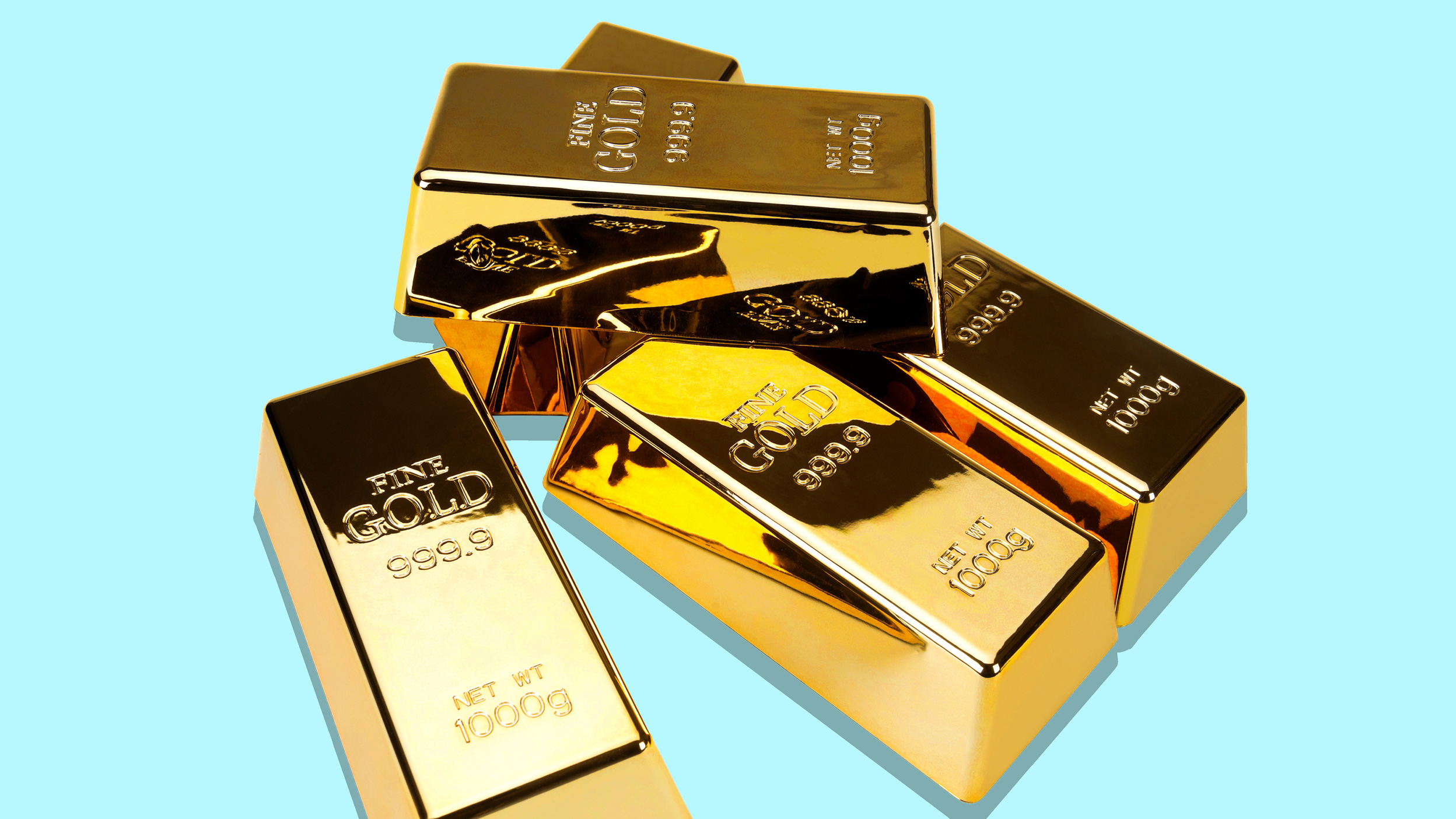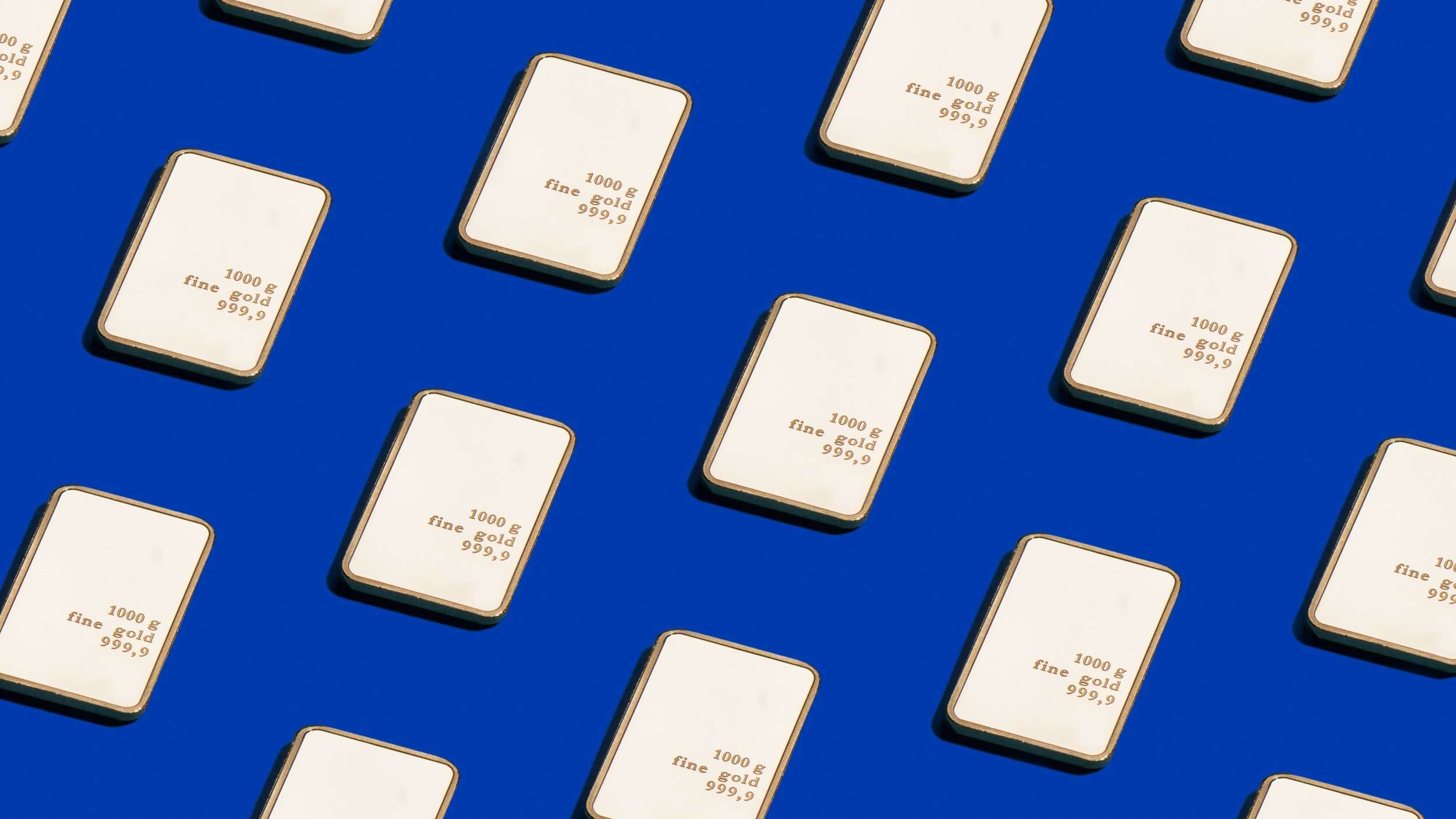
Celebrating 15 years of Gold with the Invesco’s Physical Gold ETC
Join Kathy Kriskey and Paul Syms as they discuss all things gold, including the biggest drivers of the gold price over the past 15 years and what the future might look like.
Holding gold in a balanced portfolio can provide useful diversification benefits, and historically has maintained a low correlation with most major asset classes.
Gold is often more sought-after when conditions are increasingly uncertain, or more volatile elsewhere. Unprecedented events, like the COVID-19 pandemic, can drive investors to search for relative “safe havens” such as gold.
Gold could be useful as an inflation hedge when inflation comes as a “shock” due to external factors, when prices escalate faster than expected or when central bank measures are ineffective.

The gold price dipped -0.4% in Q4 2024, the first quarterly decline since Q3 2023. However, the price of the yellow metal rose 27.2% in 2024 for its strongest annual return since 2010.

Discover insights into the key macro events and what we think you should be keeping your eyes on in the near term.
Our Invesco Physical Gold ETC provides one of the lowest overall cost exposures to the gold price in Europe. With more than US$18 billion of assets¹, it is also the largest gold product in Europe, enabling you to gain exposure to price movements without having to buy and store physical gold yourself. For investors also wishing to minimise their currency risk, we offer a currency-hedged series in GBP and EUR.
Our ETC aims to provide the performance of the LBMA Gold Price PM, less the fixed fee of 0.12% per annum. Investments are backed by physical gold bars, placed in segregated accounts, and stored securely in the London vaults of J.P. Morgan Chase Bank. Our ETC trades on multiple exchanges across Europe, is UCITS eligible and Shariah compliant. Find out more in our Gold ETC brochure.
With over 15 years of efficient tracking.1
One of the lowest-cost ETCs in Europe.1
Available at the same fee of 0.12% p.a.
You can invest in our Invesco Physical Gold ETC via your usual broker or trading platform and hold it in a standard brokerage or custodial account.
Our Capital Markets teams provide a free service to help you find the most suitable and cost-effective way to buy, sell or switch products.
Email: etftrading@invesco.com
Telephone: +44 14 9141 7044

Celebrating 15 years of Gold with the Invesco’s Physical Gold ETC
Join Kathy Kriskey and Paul Syms as they discuss all things gold, including the biggest drivers of the gold price over the past 15 years and what the future might look like.

Investing in gold
Today, gold plays an important part in some investors’ portfolios, for a variety of reasons. From central banks wanting to diversify their reserves to individuals wanting physical assets that may retain value over time. Find out more.

Our commitment towards responsible gold
As a responsible asset manager, 100% of the gold bars held in the Invesco Physical Gold ETC adhere to the LBMA's Responsible Gold Guidance.


Complete the form to receive our latest gold insights, including our quarterly gold report, monthly update, gold brochure and relevant product information.
Exchange-Traded Commodities or “ETCs”, are investment vehicles that trade on stock exchanges and track the performance of an individual commodity or basket of commodities. With ETCs, investors can get exposure to spot commodity prices, without taking physical delivery of those commodities.
Our ETC is physically backed by gold bullion (a Gold Bar List is available on our website) which is stored securely in J.P. Morgan’s London Bank vaults. The gold is inspected twice a year by Inspectorate International Limited and includes a full bar count. Once a year they are accompanied by our auditors, PricewaterhouseCoopers.
The inspection reports and the annual audit reports are available on our website at etf.invesco.com.
Yes, it is possible to receive the metal in unallocated form if you have an LBMA clearing account. When you sell your holding, you may have the option of Physical Settlement if you do not want to take the normal Cash Settlement.
Physical delivery can be made only to a holder that is not a UCITS fund. You must specify the number and account name of an unallocated account in London with a member of the LBMA where the relevant delivery amount should be delivered. Investors that are UCITS funds are not permitted to receive physical delivery of gold. UCITS funds can only redeem for cash.
Invesco Physical Gold ETC is not a fund or an ETF, as the ETC invests in only one asset, i.e. gold, it would not meet UCITS rules on diversification that are required for a fund. The certificates are transferable securities, therefore not shares in a collective investment scheme.
For investors who wish to minimize their currency risk, we have currency-hedged share classes available in GBP and EUR.
Yes, it is possible to receive the metal in unallocated form if you have an LBMA clearing account. When you sell your holding, you may have the option of Physical Settlement if you do not want to take the normal Cash Settlement. Physical delivery can be made only to a holder that is not a UCITS fund. You must specify the number and account name of an unallocated account in London with a member of the LBMA where the relevant delivery amount should be delivered.
Investors that are UCITS funds are not permitted to receive physical delivery of gold. UCITS funds can only redeem for cash.
The LBMA is a trade association that acts as the coordinator for activities conducted on behalf of its members and other participants in the London Bullion Market.
The gold price is determined via an electronic auction that takes place twice per day in London, at 10:30 am and 3:00 pm GMT, and quoted in US dollars per fine troy ounce. The LBMA Gold Price is a fully transparent benchmark and widely accepted as the basis for pricing spot transactions.
Our Gold ETC offers direct exposure to the price of gold. Our low annual fixed fee of 0.12% allows for our ETC to have tight tracking of the spot gold price.
Invesco Physical Gold ETC seeks to minimise exposure to gold mined prior to the 2012 introduction of the LBMA’s Responsible Gold Guidance. Our holdings are currently 100%2 post-2012 gold bars and our aim is to maintain this by only accepting post-2012 gold for new creations. For more details, see our responsible gold page.
1 Invesco, as at 18 October 2024.
Value fluctuation: The value of investments, and any income from them, will fluctuate. This may partly be the result of changes in exchange rates. Investors may not get back the full amount invested.
Limited recourse: If the issuer cannot pay the specified return, the precious metal will be used to repay investors. Investors will have no claim on the other assets of the Issuer.
Commodities: Instruments providing exposure to commodities are generally considered to be high risk which means there is a greater risk of large fluctuations in the value of the instrument.
Currency hedging – ETCs: Currency hedging between the currency in which the underlying precious metal is typically quoted and the currency of the certificates may not completely eliminate the currency fluctuations between those two currencies and may affect the performance of the certificates.
Data as at 31.10.2024, unless otherwise stated.
By accepting this material, you consent to communicate with us in English, unless you inform us otherwise. This is marketing material and not financial advice. It is not intended as a recommendation to buy or sell any particular asset class, security or strategy. Regulatory requirements that require impartiality of investment/investment strategy recommendations are therefore not applicable nor are any prohibitions to trade before publication.
Views and opinions are based on current market conditions and are subject to change. All investment decisions must be based only on the most up to date legal offering documents. The legal offering documents (Key Information Document (KID), Base Prospectus and financial statements) are available free of charge at our website www.invesco.eu and from the issuers.
LBMA Gold price is a trademark of Precious Metals Prices Limited, is licensed to ICE BENCHMARK ADMINISTRATION LIMITED (IBA) as the administrator of the LBMA Gold Price, and is used by Invesco with permission under licence by IBA. The full version of the IBA disclaimer is available at etf.invesco.com (select your country and navigate to the Documents section on the product page).
The publication of the supplement in Italy does not imply any judgment by CONSOB on an investment in a product. The list of products listed in Italy, and the offering documents for and the supplement of each product are available: (i) at etf.invesco.com (along with the audited annual report and the unaudited half-year reports); and (ii) on the website of the Italian Stock Exchange borsaitaliana.it.
This material is intended only for professional investors and may not be used for any other purpose nor passed on to any other investor in Belgium.
Physical Gold EUR Hedged ETC; Physical Gold GBP Hedged ETC are products that are difficult to understand. The CNMV considers that, in general, they are not appropriate for retail investors.
This communication has not been approved by the Israeli Securities Authority and will only be distributed to Israeli residents in a manner that will not constitute "an offer to the public" under sections 15 and 15A of the Israel Securities Law, 5728-1968 ("the Securities Law"). The product is being offered to a limited number of investors (35 investors or fewer during any given 12 month period) and/or those categories of investors listed in section 15A(b) of and/or the First Addendum ("the Addendum") to the Securities Law, ("Sophisticated Investors") each as defined in the said Addendum, as amended from time to time, and who in each case have provided written confirmation that they qualify as Sophisticated Investors, and that they are aware of the consequences of such designation and agree thereto; in all cases under circumstances that will fall within the private placement or other exemptions of, the Securities Law and any applicable guidelines, pronouncements or rulings issued from time to time by the Israeli Securities Authority. This communication may not be reproduced or used for any other purpose, nor be furnished to any other person other than those to whom copies have been sent. Any offeree who purchases a product is purchasing such product for its own benefit and account and not with the aim or intention of distributing or offering such product to other parties (other than, in the case of an offeree which is an Sophisticated Investor by virtue of it being a banking corporation, portfolio manager or member of the Tel-Aviv Stock Exchange, as defined in the Addendum, where such offeree is purchasing product for another party which is an Sophisticated Investor). Nothing in this communication should be considered Investment Advice or Investment Marketing defined in the Regulation of Investment Counselling, Investment Marketing and Portfolio Management Law, 5755-1995 (“the Investment Advice Law”). Investors are encouraged to seek competent investment counselling from a locally licensed investment counsel prior to making the investment. Neither Invesco Ltd. nor its subsidiaries does not hold a licence under the Investment Advice Law, nor does it carry the insurance as required of a licensee thereunder. This communication does not constitute an offer to sell or solicitation of an offer to buy any securities other than the product offered hereby, nor does it constitute an offer to sell to or solicitation of an offer to buy from any person or persons in any state or other jurisdiction in which such offer or solicitation would be unlawful, or in which the person making such offer or solicitation is not qualified to do so, or to a person or persons to whom it is unlawful to make such offer or solicitation.
EMEA 3959979